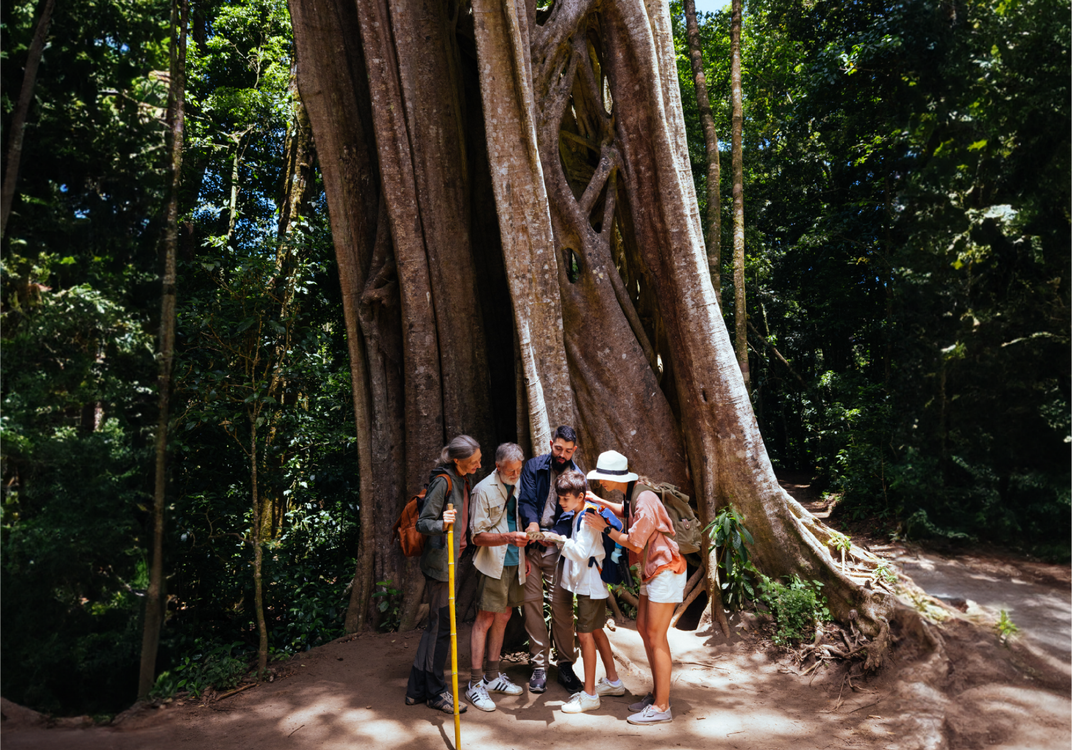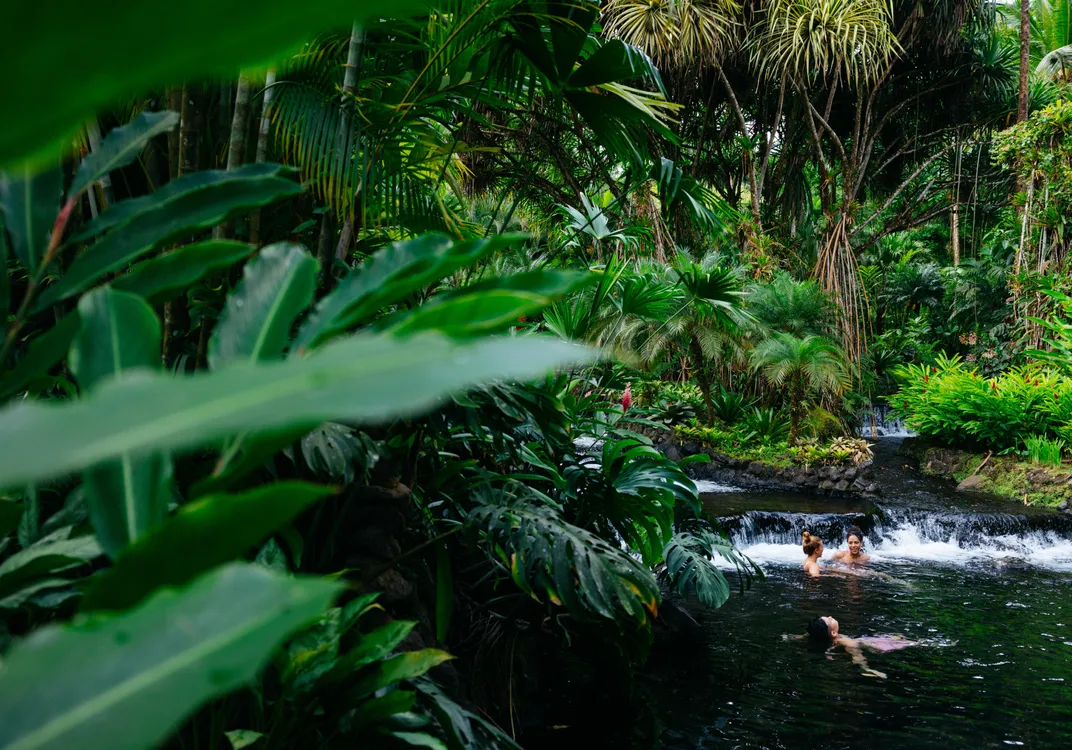This Central American country has an ambitious plan to reach climate neutrality by 2050
/https://tf-cmsv2-smithsonianmag-media.s3.amazonaws.com/filer_public/9b/92/9b925b89-efbe-457c-9cea-8b16299a058c/costarica-img_1157-v1.png)
Each year, thousands of people flock to Costa Rica’s northern highlands to enjoy the country’s largest landlocked waterbody: Lake Arenal. Situated beneath the majestic Arena Volcano and surrounded by lush, forested hillsides and pasture lands, its 33-square miles of blue waters are frequented by kayakers, paddleboarders, and wind surfers. And while the lake has been a natural treasure for many millions of years, it wasn’t always quite as large. During the 1970s, the Costa Rican Institute of Electricity constructed Presa Sangregado Dam at the lake’s western end, tripling Lake Arenal’s size while also creating a renewable energy source powerful enough to generate 12 percent of the country’s electrical power.
In Costa Rica, sustainability is a way of life. The country has long been a pioneer in protecting its plentiful natural resources, including its biodiverse cloud forests and rainforests, golden and black sand beaches, and active volcanoes’ vibrant ecosystems. Today, it’s on a mission to become the first carbon neutral country on the planet. With renewable energy sources already making up nearly 93 percent of Costa Rica’s electricity, the country is well on the way to reaching that goal.
How Are They Doing It?
At just 19,730 square-miles, Costa Rica is roughly the size of West Virginia. Despite its relatively small footprint, the country’s high concentration of rivers, dams, and volcanoes provide a plethora of renewable energy resources.
After the end of Costa Rica’s civil war in the late 1940s, the country abolished its army, opting to invest its budget instead on environmental conservation, education, and health. Around the same time, its government created the Costa Rican Electricity Institute to tap into its renewable natural resources, diversifying between green energy technologies like geothermal energy—deriving power from heat beneath the earth’s surface—as well as wind power, solar power and the use of biomass, a renewable organic material that comes from plants and animals.

However, Costa Rica’s ample waterways and high volume of annual rainfall has made hydropower the country’s obvious choice when it comes to renewable energy. In fact, electricity harnessed from moving water makes up more than half of the country’s overall energy output.
In 2019, Costa Rica launched its National Decarbonization Plan which aims to make the country carbon neutral by 2050, meaning the country won’t produce more carbon emissions than it can offset. The ambitious plan includes a combination of mid- and long-term targets poised at reforming transportation, energy, waste, and land use. For example: despite the country’s electricity system being almost entirely generated from renewable energy, public transportation still accounts for approximately 40 percent of Costa Rica’s climate-changing emissions. Costa Rica’s goal is to transfer 70 percent of public buses and taxis to clear air alternatives, like electricity, by 2035, and make them entirely emission-free by 2050.
The National Decarbonization Plan also includes initiatives to develop integrated, low greenhouse gas emission systems to collect, separate, reuse and dispose of waste by 2025. The country has already banned the sale and free distribution of single-use plastic straws and bags, with exceptions for reusable and biodegradable bags. Although these latter bags can be plastic, they must be certified for low environmental impact and cannot be single-use.
By the 1980s, Costa Rica had lost somewhere between a half and a third of its trees to loggers and agriculture. However, thanks to a successful reforestation program—which includes a Payment for Environmental Services Program, providing financial incentives to farmers or landowners who engage in activities like agroforestry and planting tree farms—and forests now cover nearly 60 percent of the country. The country’s Decarbonization plan calls for maintaining this percentage and even increasing it by 2050.
Costa Rica’s Other Sustainable Development Initiatives
Ecotourism is an essential aspect of Costa Rica’s sustainability initiatives. In fact, according to the country’s tourism board, nearly two-thirds of the three million people that visit Costa Rica every year do so because of its natural offerings. Whether it’s by hiking among the lush greenery of the Monteverde Cloud Forest Reserve, seeking out howler monkeys and two-toed sloths, or riding horseback on the slopes of Arenal Volcano, overlooking the lake of the same name, ecotourists play a big role in preserving the country’s natural resources as well. By experiencing the beauty of a red macaw in the wild or seeing a tree frog up close, visitors are more apt to want to engage in their own conversation efforts. This might mean something as simple as keeping to marked trails and giving wildlife a wide berth or supporting a local non-profit with the rescue and rehabilitation of sea turtles.

Costa Rica is home to about six percent of the planet’s land-based and marine life biodiversity. It also boasts nearly a half-a-million acres of protected land, including 29 national parks, 19 wildlife refuges, 8 biological reserves. These include places like Tortuguero National Park, a remote stretch of tropical rainforest, swamps and beaches, and Santa Rosa National Park, which protects some of the last remaining tropical dry forest in the world—one that’s brimming with wildlife such as tapirs, jaguars, and white-nosed coatimundis.
The country’s dedication to sustainability extends to community-led initiatives, such as locally run ecolodges and fair-trade coffee farms, as well as industry. In 2018, Costa Rica joined the Wellbeing Economy Alliance, a collaboration of organizations, alliances, movements, and individuals worldwide, all working toward an economy that puts human and ecological well-being first. This includes attracting multinational companies that prioritize sustainability, like US-based medical device company Boston Scientific, and global tech innovator IBM.
A Green Initiative Pioneer
When it comes to sustainability, Costa Rica is a global model for everything from investment to ecotourism. Still, it’s the country’s commitment to renewable energy that’s leading the charge.




